On November 19, 2019, Valve announced on Twitter the release of a new installment in the iconic Half-Life series — Half-Life: Alyx (tweet). It’s certainly great news for fans and gamers alike. There’s just one catch: the developers said the new game will be available only to owners of VR headsets!
Later, the official trailer for the game was released, and it looks pretty good.
Naturally, this news shook not only the VR community but also many gaming and gaming-adjacent outlets that had previously steered clear of VR. Opinions split: some say VR is dead, nobody wants the new Half-Life in VR, and these are just Valve’s dreary VR ambitions, while others claim VR is alive and kicking and a new era of PC gaming is just around the corner.
Who’s right? Should you rush out and buy a VR headset right now? What’s the state of the VR industry today? And is it only good for messing around with a couple of gimmicks? Let’s dig in and find some answers.
Jumping ahead, VR today isn’t just about games—it’s also used for 3D modeling, watching 3D movies and panoramas, taking virtual walks in Google Maps, and the like.
Remember how it all began?
I’m not going to dwell on 1990s-era VR—interesting as it is, it has little relevance today. All we need to know is that the industry’s first stab at it was such a disaster that for many years no one even tried to make anything similar.
Modern VR is often traced to the launch of a crowdfunding campaign to manufacture the Oculus Rift headset in the summer of 2012, and the announcement of Google Cardboard in the spring of 2014.
Cardboard is a cardboard viewer with two lenses. You slot in your phone, and a dedicated app renders a stereoscopic image on its screen.
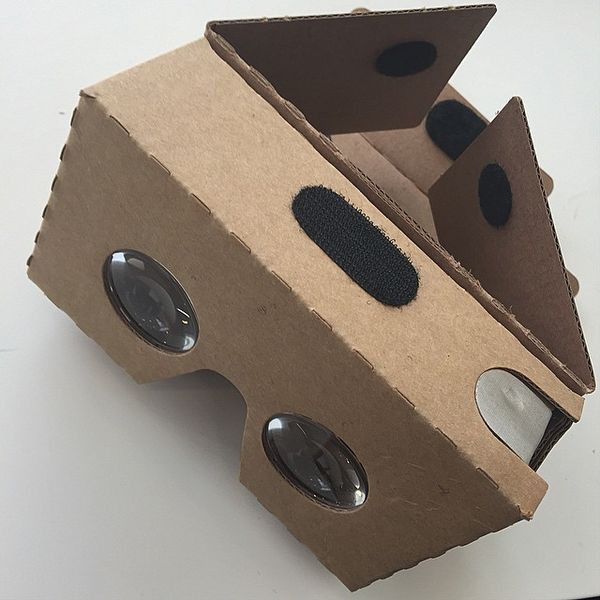
In headsets like Google Cardboard, 3D image quality was determined by the phone’s display resolution (Google recommended models with at least a 1080p screen), and head-rotation tracking was handled by the phone’s gyroscope. In other words, you’d launch an app on your phone, slide it into the cardboard viewer—and you were in VR: you saw 3D and could look around this brave new world by turning your head.
Cool? Definitely. Plenty of phones have a gyroscope, and you could grab the cardboard viewer for a couple of bucks on AliExpress—or even cut and fold one yourself if you found a pair of suitable lenses. Google knew this too and even posted DIY-style blueprints on its site.
People had a laugh and moved on. Samsung, inspired by Cardboard, decided to release their own headset, Gear VR (now discontinued). It was designed for select Samsung smartphones, mostly flagships—in other words, the headset didn’t have a built-in display.
At the same time, Gear VR already had a plastic housing and some built-in electronics, like a three‑axis gyroscope. The headset came with a controller intended for navigating in virtual reality. But these headsets weren’t cheap at launch. And that was for a plastic box with a gyroscope and a remote! This was late 2014.
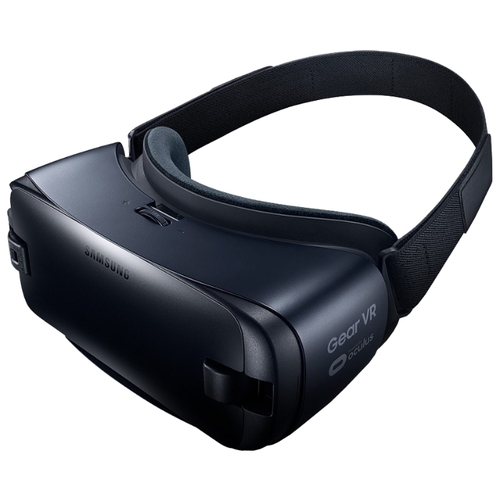
By mid-2013, early Oculus Rift pre-order customers began receiving DK1 developer kits, with DK2 arriving by mid-2014. It was a much more serious product than Google Cardboard or Samsung’s toy-like offerings, but it was aimed primarily at enthusiasts willing to spend and at early game developers.
The modern VR market really began to take shape in 2016, when Valve, in partnership with HTC, released the Vive headset, and Oculus—already under Facebook—unveiled its first consumer model, the CV1. From there it’s a short step to today’s market landscape—and that’s what we’re going to discuss.
How modern VR headsets work
All VR headsets, no matter the price, work on roughly the same principles. The nuances, however, can vary a lot. That’s what we’re going to explore.
3D visuals are the foundation of VR immersion
If we set aside the Cardboard-style cheap plastic knockoffs flooding AliExpress and talk about serious, full-size VR headsets with their own hardware (both PC-tethered and standalone), the image is generated by an internal display (or two displays, one per eye) that shows two separate frames: one for the left eye and one for the right. The panels can have different resolutions. For example, the popular Oculus Rift S uses a single display with a resolution of 2560×1440 pixels and an 80 Hz refresh rate.
We still view the image through lenses, just like with the early Google Cardboard viewers, but the lenses themselves are now much larger, more expensive, and sharper. Typically, modern headsets use Fresnel lenses. They’re lightweight, offer clarity over a fairly large area, and are an excellent fit for VR headsets.
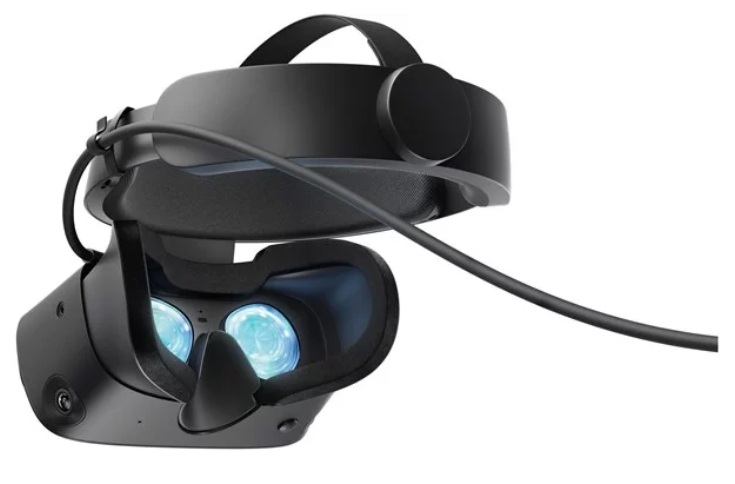
In general, the higher the display resolution, the higher the headset’s price—and the less visible the so‑called screen‑door effect, where your eye can make out the gaps between individual pixels.
To get a feel for it, take a smartphone and look at it through a magnifying glass. If the screen resolution isn’t particularly high, you’ll see the pixel grid quite clearly. That’s one of the issues with modern VR headsets, and developers combat it by increasing resolution or using various tricks to mask the effect (for example, the Samsung Odyssey Plus uses its own pixel-hiding technique that, by most accounts, works—though the image becomes a bit “soft”). It’s clear that overcoming the screen-door effect is only a matter of time.
Another issue is the limited field of view. Imagine looking at the world through a ski or diving mask (on forums it’s often called the “diving mask effect”). Unfortunately, in today’s VR a horizontal FOV of 90–110 degrees is considered normal. That said, in active, fast-paced games you quickly stop noticing it.
New headsets like Pimax 5K/8K already offer a 170–200° field of view. That said, the actual resolution and panel specs didn’t quite match what was promised, and the Pimaxes aren’t exactly affordable. On top of that, the most commonly used mode is still 140° FOV, because at 200° even modern GPUs struggle to keep up—if they can handle it at all.
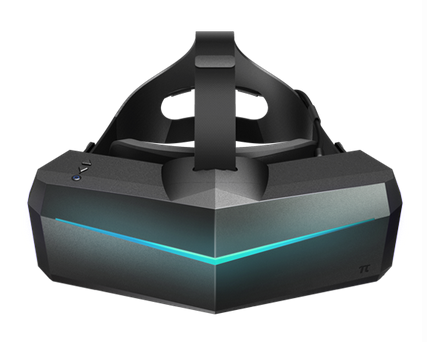
Head Tracking in VR
A picture alone isn’t enough to make you feel transported to another world. If all you have is a 3D image, it’s not much different from watching a movie. Modern VR headsets let you turn your head in any direction while the virtual world stays put—just like in real life.
Head rotation is currently tracked using gyroscopes and accelerometers. The hardware built into headsets is usually more accurate than what you find in phones. The headset software samples sensor data at a very high rate, so to the user it feels just like turning their head in real life. Head tilts are tracked the same way.
If you try the same trick with Cardboard or other phone-based headsets, you’ll almost certainly notice jerkiness when turning your head, and the sense of immersion starts to fade. Great tracking is one of the core arguments in debates between mobile VR supporters and owners of pricier PC headsets.
All low-cost, entry-level headsets offer this kind of head-rotation tracking in space, also known as 3DoF (three degrees of freedom). Essentially, it’s the basic underpinning of how any VR device operates.
If the gyroscope part is more or less clear, the more interesting piece is spatial tracking of head position in VR, which is already available in high-end VR headsets (a.k.a. “positional tracking,” or 6DoF). To see what I mean, imagine that in VR you can not only turn your head, but also move it forward and back, up and down, left and right.
For example, while standing in place, you can lean your head toward a poster on a virtual wall or, like in The Matrix, dodge a bullet by simply crouching or leaning back. Positional tracking is a new level of immersion. But how does it work?
There are two approaches. The first type of tracking is used in early PC headsets like the Oculus Rift DK2/CV1 or the Vive / Vive Pro. With the Oculus models, dedicated camera sensors (bundled with the headset) are placed around the room; they detect the infrared light emitted by the LEDs on the headset. This allows the system to determine the headset’s position and orientation in 3D space.
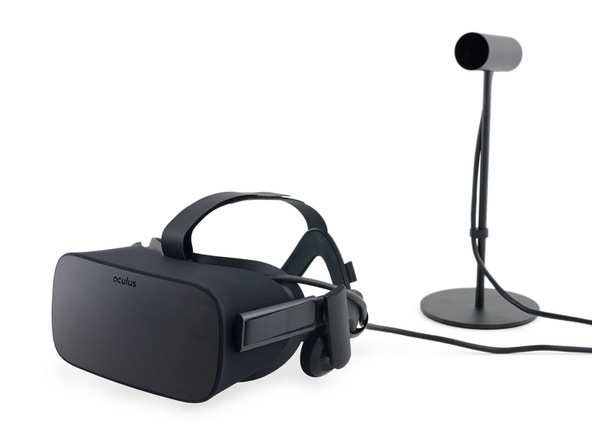
Vive and the now-popular Valve Index use a similar tracking setup; instead of cameras, they rely on base stations, and the system is laser-based.
The main downside of this tracking method is that you need to set up external cameras or base stations for the headset to work properly. They also have to be spaced a certain distance apart. That’s a problem if your VR play area is small or you have nowhere to mount the sensors.
And this is where the second type of spatial tracking comes in—the so-called “inside-out tracking” (also referred to as “tracking from the inside” or “inside tracking”). Here, the cameras used to determine spatial position are built directly into the headset. They scan the surroundings and, based on how the scene changes, infer on the fly that the user has moved their head.
The explanation may sound a bit complex, but the approach is highly effective. The first to put it into practice was the team at Microsoft, who developed Windows Mixed Reality. Building on that platform, several manufacturers quickly released their own VR headsets.
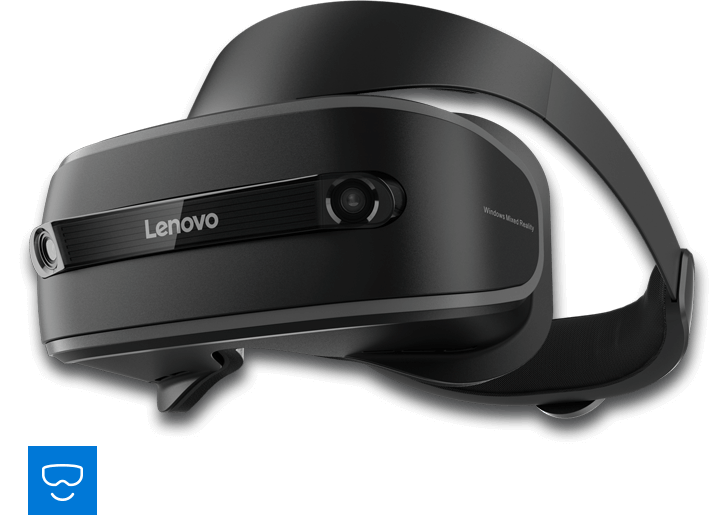
This approach eliminates the need to set up external sensors or base stations, making the headset bundle much cheaper and more compact. Obviously, the more cameras on the headset, the better it can track its position. Oculus took this idea further: the current Oculus Rift S has five built-in cameras, and the Oculus Quest has four. Meanwhile, HTC packed six cameras into its new Vive Cosmos for positional tracking.
But happiness isn’t about the cameras—or rather, not only about them.
Hand tracking in VR
The first PC-tethered headsets were controlled either with a keyboard and mouse or a console-style gamepad (for example, the Oculus CV1 shipped with an Xbox 360 gamepad). This changed with the release of the HTC Vive, which launched alongside motion controllers. These devices let games and apps receive information about hand position. Later came the Oculus Touch controllers for the Oculus Rift CV1, and so on.
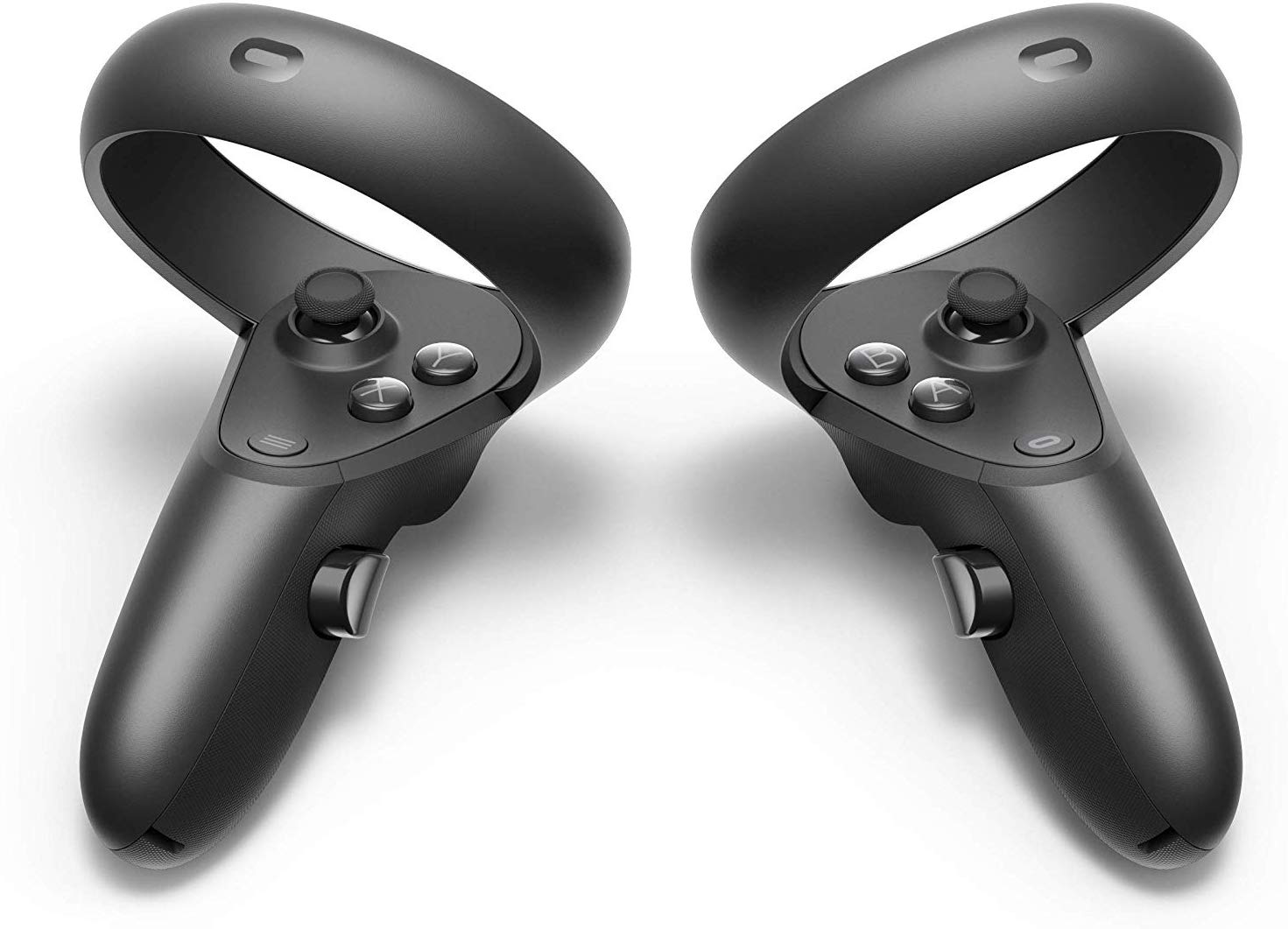
Today, the most advanced option is the Valve Index “Knuckles” controllers. Their key feature is tracking not just hand position, but each individual finger and the force of your grip. The catch is that few games support this yet. Half-Life: Alyx is expected to unlock their full potential.
The tracking principle here is similar to the head-position tracking we already discussed. You pick these things up, and the “magic” begins (well, almost). For example, with Oculus Touch, there are sensors inside the rings whose positions are read by the headset’s cameras.
Which tracking method is best?
At first glance, on-device tracking seems like the most sensible approach and the way forward. But for now, things aren’t so clear-cut.
First, headsets with this type of tracking need good lighting so their cameras can see the environment, whereas the Oculus Rift CV1 could operate just fine in complete darkness.
Secondly, in those shooters you aim like in real life, gripping the virtual rifle and bringing it up to your face (which is very cool!). But that means one hand occludes the other, and the headset’s cameras can misread the controllers’ position, throwing off the tracking. You can get the same effect if your external sensors are set up incorrectly.
The same problem hits a player trying to draw an arrow from a quiver in Skyrim or a similar game: the headset’s cameras can’t see the controllers when they’re behind your back. If the motion is quick, though, predictive algorithms may kick in and infer where the controller moved.
All in all, there aren’t many games left that don’t play well with inside-out tracking, so you can confidently choose a headset that uses this technology.
“How Do You Walk Here?” or Getting Around in VR
Another important point we still need to cover is how to move around in the virtual world. In theory, nothing prevents you from simply walking around the room—the cameras will translate your movement into VR. But hold on: plenty of things get in the way in practice—furniture, walls, and the limited length of headset cables when you’re tethered to a PC.
That’s why, most of the time in VR, we still move around using the buttons on the controllers. It’s like playing an RPG with a gamepad: push the stick forward and the character walks forward; pull it back and they walk backward. It works the same way in VR, though it has its own quirks.
Feature one: different controllers use different inputs for movement. We’ve already looked at Touch; in the photo below are the Vive controllers, which have touchpads instead of thumbsticks. You either press in the desired direction or touch the right spot—depending on the game and how the developers implemented it.
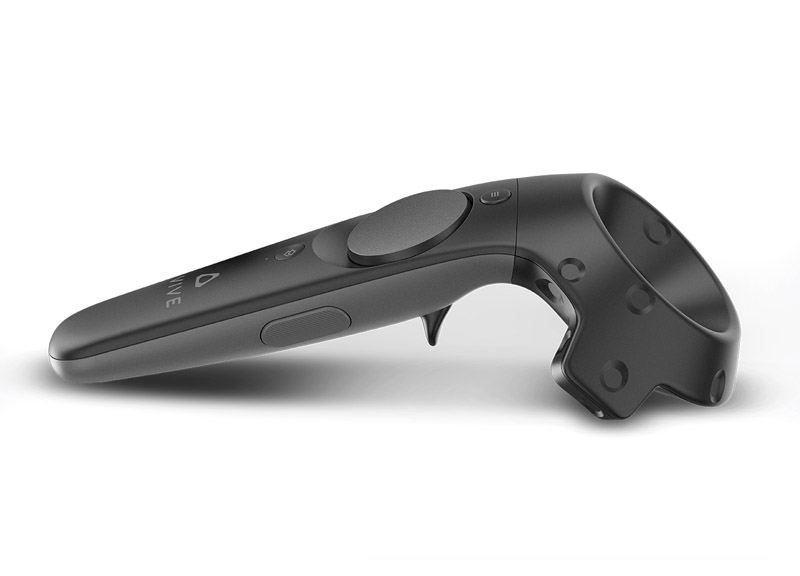
These controllers are also nicknamed “wands” (and “shovels”), and you can argue endlessly about how ergonomic they are, but it’s hard to deny they were first to market. Personally, I’d rather play with the Oculus Touch thumbsticks than on a trackpad like that. When Valve’s engineers worked on their latest-generation controllers, they chose sticks too—and not by accident.
Second point: Games use different player movement schemes. The two most common are teleportation and locomotion (smooth movement).
Why make it so complicated? The thing is, VR often causes motion sickness—especially for newcomers—until you get used to it. In the real world you’re standing still, but in VR your body seems to be moving, and that mismatch feels uncomfortable. To address this, developers introduced teleportation-based locomotion.
Here’s roughly how it works: pick the direction you want to move, point with the controller, press the button, and you instantly appear where you want to be.
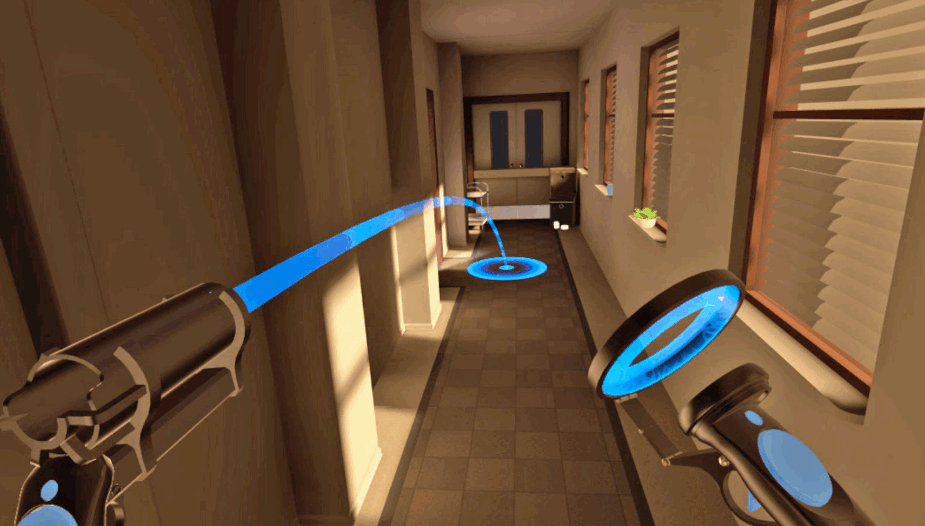
Teleportation does reduce nausea, but it’s not very convenient and it really hurts immersion. That’s why the preferred method is smooth locomotion: push the stick or touchpad and you start moving in the chosen direction. Ideally, developers let you choose from multiple locomotion options.
In some games, the right thumbstick lets you rotate the camera, just like on a regular console. Sure, it’s more immersive to turn your head yourself, but sometimes you want to play seated and full 360-degree movement isn’t an option.
Which VR headset should you buy?
We’re done with the theory—let’s get practical! Let’s look at what’s available today and what to choose depending on the situation.
To start, here’s a large classification chart of VR headsets to help you get your bearings.
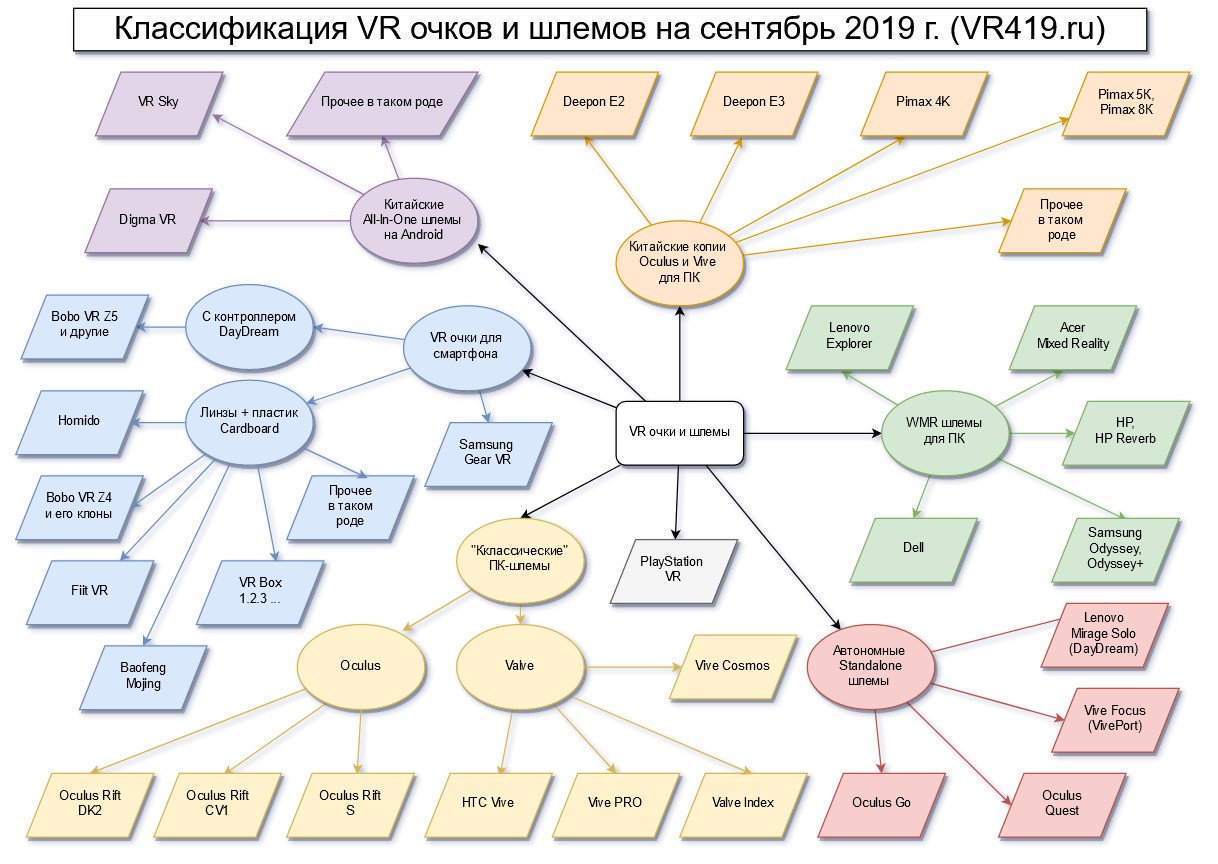
Smartphone VR headsets: Are they worth trying?
Beyond Cardboard clones, manufacturers in China have churned out a slew of plastic headsets (or “goggles”), with comfort levels all over the map. The concept is simple: you get a plastic shell, lenses, and a screen-tap button used for control in some apps. They might also add built-in headphones or even fans to cool the phone. And of course, you slide a smartphone inside; its display and gyroscope do the heavy lifting.
The main advantage of this kind of “box” is the low price. If you already have a suitable phone (powerful enough to run games and with at least a 1080p display), it’s the most affordable option. If you don’t want to wait for delivery, check local retailers.
The key thing to know about these devices is that the headsets can be long‑focus (the phone’s screen is farther from your eyes) or short‑focus (the screen is closer).
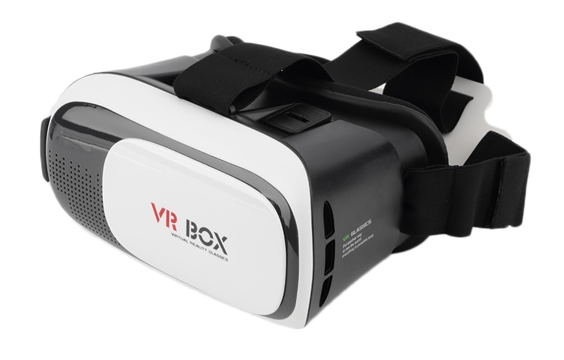
The headset shown above is really only good for watching 3D movies. If you want something closer to a proper VR experience, go for a short‑focus headset like the Bobo VR Z4 or something similar—there are plenty of options.
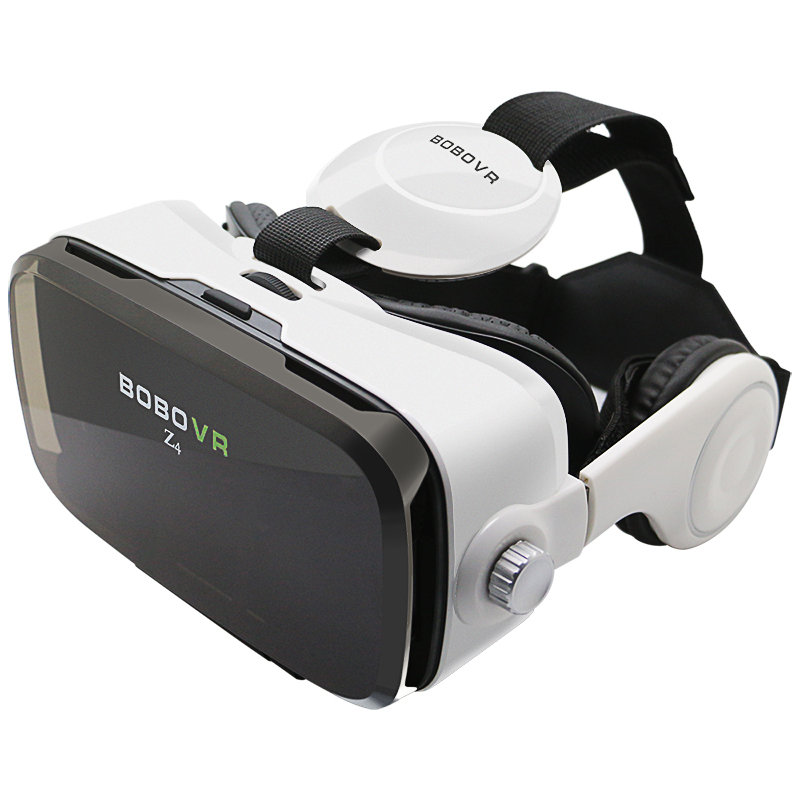
The idea is that the screen sits much closer to your eyes, so the field of view in these glasses is wider than in a VR box. As a result, the sense of immersion in the virtual world is significantly greater.
info
If a VR box is like peering into a VR window from the hallway, then BoboVR and similar headsets are like viewing the VR world through a diving mask—already much closer to full-size PC headsets.
If you’re not pinching pennies, you can stop by M.Video and pick up the Homido v2 or a similar model. They’re decent, comfortable goggles made by a French company. And keep in mind there are no miracles here: even at that price you’re still getting a comfortable plastic box with lenses—and no electronics inside.
Should you buy these headsets?
There are two ways to look at it. On the one hand, this is bottom-of-the-barrel VR—only foldable cardboard viewers are worse. Expect lousy tracking, no positional tracking, a visible pixel grid (the screen-door effect), and that “scuba mask” tunnel vision. In short, it’s a good way to ruin your impression of VR.
On the other hand, that’s still something! Yes, it’s dirt-cheap, bare-bones, and the quality is awful. But at least you can get a small taste of this brave new world. And if it doesn’t click for you in this form, there’s a good chance the bigger Oculus, Vive, and Index won’t appeal either. The universal issues—like the “scuba-mask effect” or a noticeable screen-door effect—are present even on higher-end headsets. That puts many people off: everyone wants the Matrix, but we’re not there yet.
In short, mobile VR is a very basic demo of true VR. Keep that in mind and decide for yourself whether it’s worth trying. Personally, I’d say if your city doesn’t have a VR arcade, it’s worth a shot; but if it does, you’re better off visiting the arcade first.
VR Arcades
VR-equipped gaming centers are popping up more and more often. They aren’t cheap.

You don’t have to spend all your time in those clubs. For starters, you can just drop by to get acquainted with modern VR. They usually have up-to-date gear, meaning you can try the latest headsets and controllers and experience VR the way it was meant to be: with hand tracking and positional tracking.
Second (and this really matters!), if you’re choosing a headset, make sure to go to a VR arcade and try it. You’ll be able to judge both overall comfort and image clarity.
There are real cases where people buy, say, an Oculus Rift S, which lacks hardware interpupillary distance (IPD) adjustment (there’s a software setting, but it’s not the same), and they’re simply uncomfortable using the headset: the image is either blurry or doubled. And since the device isn’t cheap, it’s better to spend a few hundred extra on a test first.
One more important note about phone VR headsets. Cardboard as a platform is dead. Apps built for it still run, but no one is going to develop anything new. The same goes for Daydream, which Google launched as a replacement for Cardboard: in November 2019 they announced the project’s shutdown. That means you’ll have a limited selection of apps on a phone, and there are very few that are truly worthwhile or interesting.
For the same reason, I wouldn’t bother with Gear VR—the platform is dead, and these devices are hard to find now. Unless you happen to have a compatible Samsung phone and you’re thinking of picking up a used Gear VR on the cheap.
Some tinkerers also stream PC games to a phone (search for RiftCat and Trinus VR), but it’s a hassle, and hand tracking with positional tracking in such streams is basically impossible without major hacks.
Chinese all-in-one Android VR headsets
This is another type of budget headset you can find on AliExpress. Unlike the previous category, these have built‑in electronics: a screen, gyroscope, processor, and so on. Basically, it’s like a smartphone without the radio modules. They typically run ancient Android builds (4.x or 5.x) with the Nibiru shell on top. The components used in these devices are cheaper, too.
Which means you’re getting all the drawbacks of the smartphone VR headsets we already covered: limited VR and a fading Google Cardboard ecosystem. If you can find a pair very cheap and the specs are acceptable, they’re fine for watching movies. But they’re not a good choice for gaming.
Chinese clones of the Oculus, Vive, and other high-end PC VR headsets
Chinese makers tried cloning full-fledged VR headsets too, but in the end only Pimax stayed afloat. Their saga could be an article in its own right.
Back in late 2017, the folks at Pimax promised VR headsets with 8K resolution and a 200-degree field of view. They raised over $4 million on Kickstarter and went into production. Shipping to backers slipped by about a year, the touted 200° FOV was misleading (blurry edges), and the effective resolution was lower than advertised.
But the team didn’t give up and, in spring 2020, promised to start shipping “true 8K” headsets to backers. They also refreshed the lineup, adding the budget Artisan at $449.
By the way, the Artisan is shaping up to be solid: 140-degree field of view (earlier 5K headsets were indeed praised for their wide FOV, so the claim checks out), 1700×1440 resolution per eye, and refresh rates of 72, 90, and 120 Hz. The only catch: it’s still unclear when the Artisan will be released.
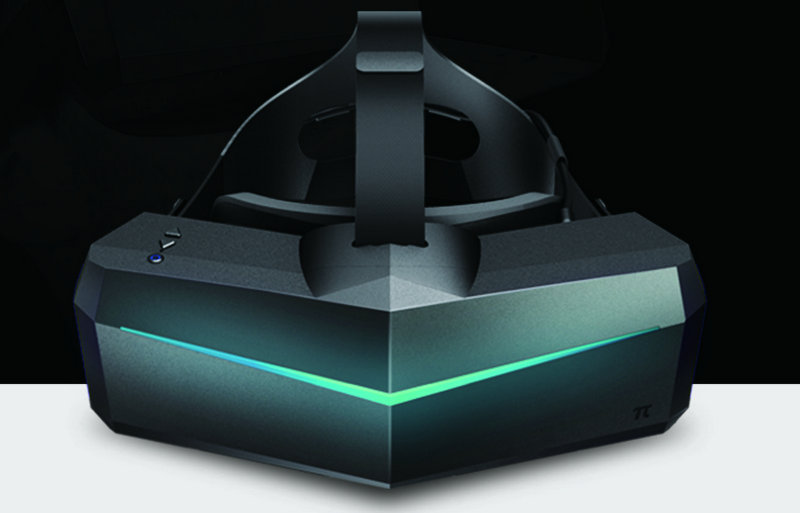
So Pimax isn’t a scam after all—the developers are trying to deliver on their promises, but it’s taking a long time. I’d only recommend this option for those willing to wait.
Also, don’t get too excited about the 500. Pimax is working on its own “knuckles”-style controllers with per-finger tracking, but it’s still unclear when they’ll be ready and how much they’ll cost.
Windows Mixed Reality (WMR) Headsets
In 2017, Microsoft unveiled its take on VR: the Windows Mixed Reality (WMR) platform. Several manufacturers quickly released headsets based on it, including Lenovo, Acer, HP, Dell, and Asus. Samsung later joined with its Odyssey headset.
What do these helmets have in common?
- Integrated inside-out tracking using two cameras built into the headset.
- Display resolution: 1440 × 1440 pixels per eye (2880 × 1440 total).
- Motion controllers with LEDs.
The controllers there are quite unusual.
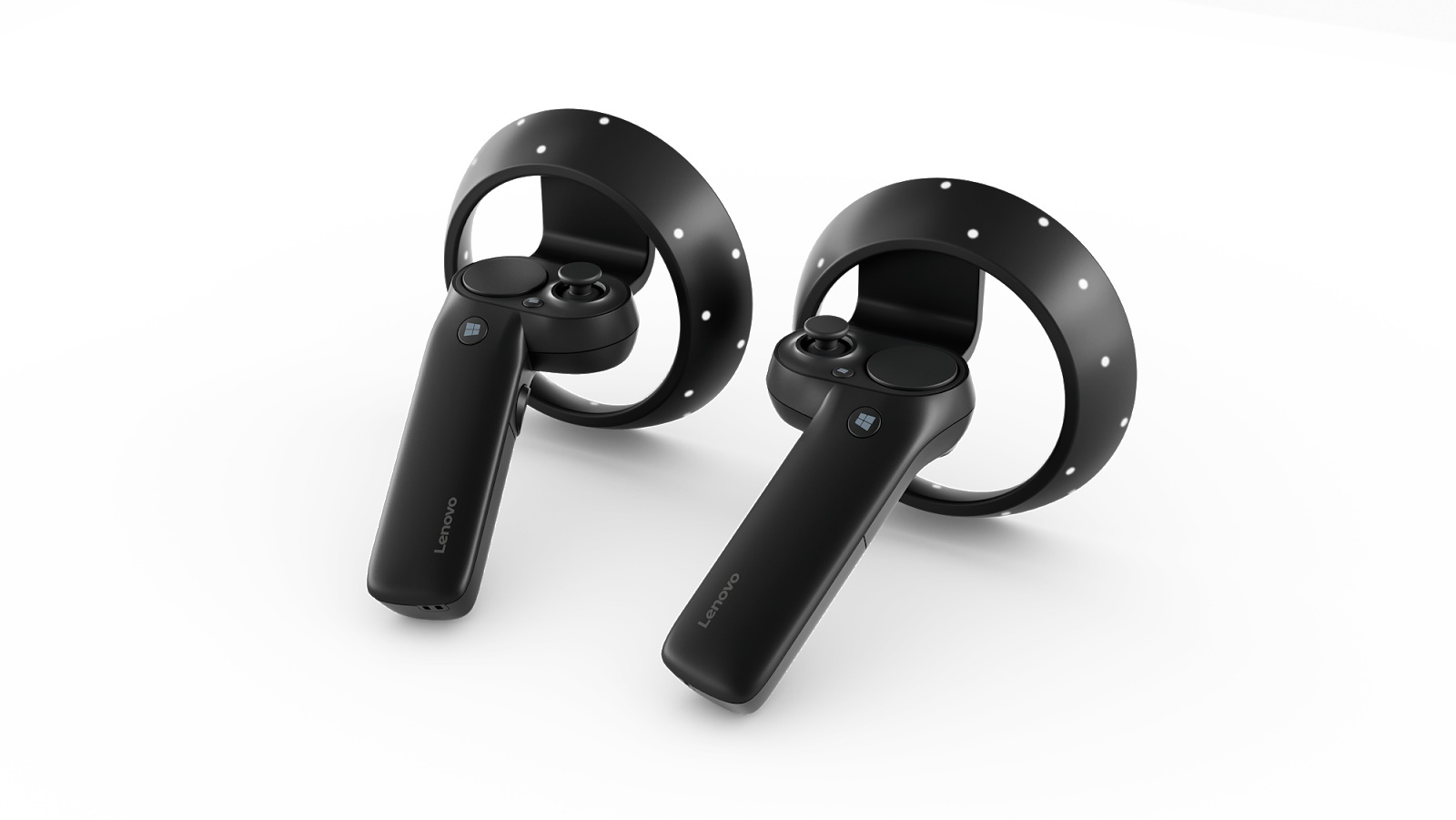
To keep costs down, they use standard LEDs (unlike the infrared LEDs on Oculus), and the ergonomics are pretty odd as well. On the plus side, there are thumbsticks—but they don’t work correctly in every game.
The Samsung Odyssey is worth highlighting. It offers a higher resolution (2880 by 1600 pixels) and slightly different controllers. It’s also the only headset in the lineup with built-in headphones.
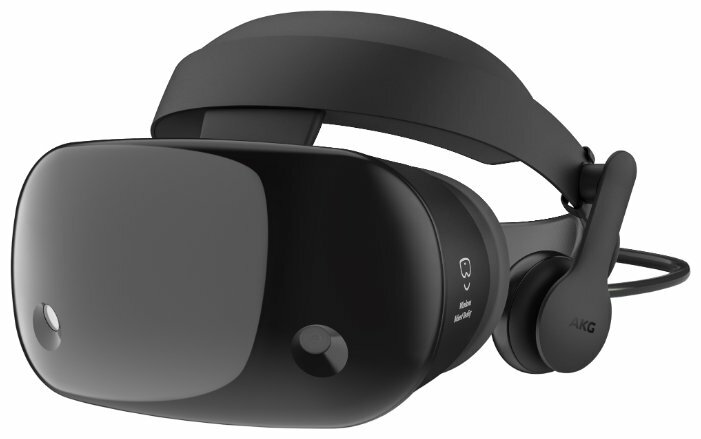
The most popular WMR headsets were the Lenovo Explorer and the Samsung Odyssey.
If you check Amazon, you’ll often find listings for the Explorer starting at 180 USD and the Odyssey+ from 230 USD. But you’ll have to pay extra for shipping.
Essentially, WMR offered full-fledged VR at a reasonable price, so at some point people really did rush to buy those headsets. WMR’s share on Steam topped 10 percent. That was 2018—the golden age for WMR. But by late 2019, the picture had changed significantly (https://store.steampowered.com/hwsurvey).
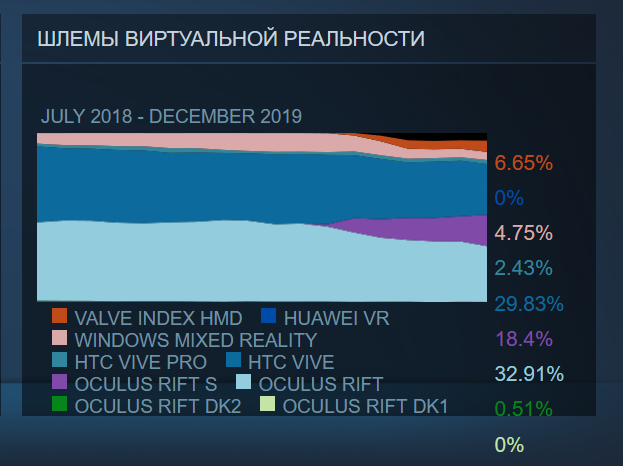
As we can see, WMR headsets are becoming increasingly scarce, and there’s little hope of them making a comeback. Why? There are several reasons.
Tracking issues. Users report tracking glitches in low-light conditions. Two cameras just aren’t enough for reliable inside‑out tracking; competitors ship four or even six. Back when there weren’t many alternatives, people still went with WMR.
WMR as a platform is basically stagnating. Updates are few and far between, and there are no exclusive games—unlike on Oculus. Microsoft also made their stance on VR pretty clear when they announced the new Xbox (Series X) wouldn’t support WMR.
Software problems. WMR’s market share is shrinking, and developers don’t always bother adding support for these headsets in new titles. High‑profile examples: Boneworks (https://store.steampowered.com/app/823500/BONEWORKS/), which initially lacked support, and the VR release of No Man’s Sky (https://store.steampowered.com/app/275850/No_Mans_Sky/), where WMR owners’ controllers didn’t work.
Overall, WMR headsets can be considered a budget option, especially if you buy them abroad (for example, an Odyssey+ for $230). But keep in mind the platform is basically dead. By the time the next wave of games lands, patches might stop coming altogether.
www
Before buying a Windows Mixed Reality (WMR) headset, you can check your PC’s compatibility using the official tool.
VR Industry Leaders: Oculus, HTC Vive, and Valve Index
Now we’ve reached the most interesting group of headsets—the ones I call “classic.” This is where full-fledged VR begins, with no caveats. And it’s one of these that I’d actually recommend buying. Which one exactly depends on your budget and needs.
We can see they’re the market leaders from the Steam Hardware Survey. 51.3% of users have an Oculus Rift CV1 or Oculus Rift S, and 32.2% have an HTC Vive or HTC Vive Pro. Valve Index is already at 6.6%, even though it only went on sale in summer 2019. That’s more than all Windows Mixed Reality headsets combined, despite those being on the market for two years.
Why is that? Let’s take a closer look at what sets these helmets apart, and the answer will become clear as we go.
They all connect to a PC via cable and need a reasonably powerful machine to run smoothly.
Oculus Rift
As of now, Oculus has three wired headsets (there are wireless models too, but we’ll get to those later).
So, let’s see what our options are.
Oculus DK2 is outdated at this point—only worth buying if you can get it for next to nothing; they’re still sold on eBay. It has a Full HD display and a single external camera for positional tracking (it must be included; without it the headset is essentially useless and won’t work) with a 180° field of view. There are no motion controllers. You could try using PlayStation Move or Razer Hydra, but I wouldn’t recommend it. And if you’re buying a used DK2, be ready for Oculus to discontinue support sooner or later.
Oculus Rift CV1 is now considered outdated and has been discontinued. That said, it’s a full-fledged VR headset: the display is 2160×1200 total for both eyes, with a 90 Hz refresh rate. It also has a physical IPD (interpupillary distance) adjustment. The package includes two external sensors and two Oculus Touch controllers for hand tracking in VR. Early bundles of this headset shipped without Touch—just with gamepads—but you can buy the controllers separately later.
Is it even worth buying today? If you’re on a tight budget and stumble across a good deal, it’s a solid starter kit that’s fully capable for VR. It will likely keep getting support for quite a while, since, judging by Steam, around 30% of players use it right now. Just keep in mind that you’ll need to set up room sensors, and headsets in this class are pointless without a modern PC.
Here are the PC requirements for the Oculus Rift CV1.
Oculus Rift CV1
- Graphics: Nvidia GTX 1060 / Radeon RX 480 or better, or Nvidia GTX 970 / AMD Radeon R9 290 or better
- Processor: Intel i5-4590 / AMD Ryzen 5 1500X or better (CPU must support SSE 4.2 instructions)
- Memory: 8 GB or more
- Video output: HDMI 1.3 compatible
- USB: three USB 3.0 ports + one USB 2.0 port
- OS: Windows 10
These are the recommended requirements from the manufacturer’s website. In practice, the headset can run on weaker machines, but some games may experience slowdowns or stuttering.
Pay attention to the required number of USB ports. You’ll need one USB 3.0 port for the headset and two for the cameras. If you have no other option, USB 2.0 will work, but USB 3.0 provides a higher sensor polling rate.
The CPU must support SSE 4.2 instructions — that’s mandatory. Without them, the headset software simply won’t install. Oculus used to offer a compatibility checker, but it’s been removed. So if you want to see whether your PC will work, you’ll have to download the full Oculus software (about 10 GB), install it, and confirm it launches and runs correctly. If the installer or app throws errors, it’s likely a hardware issue.
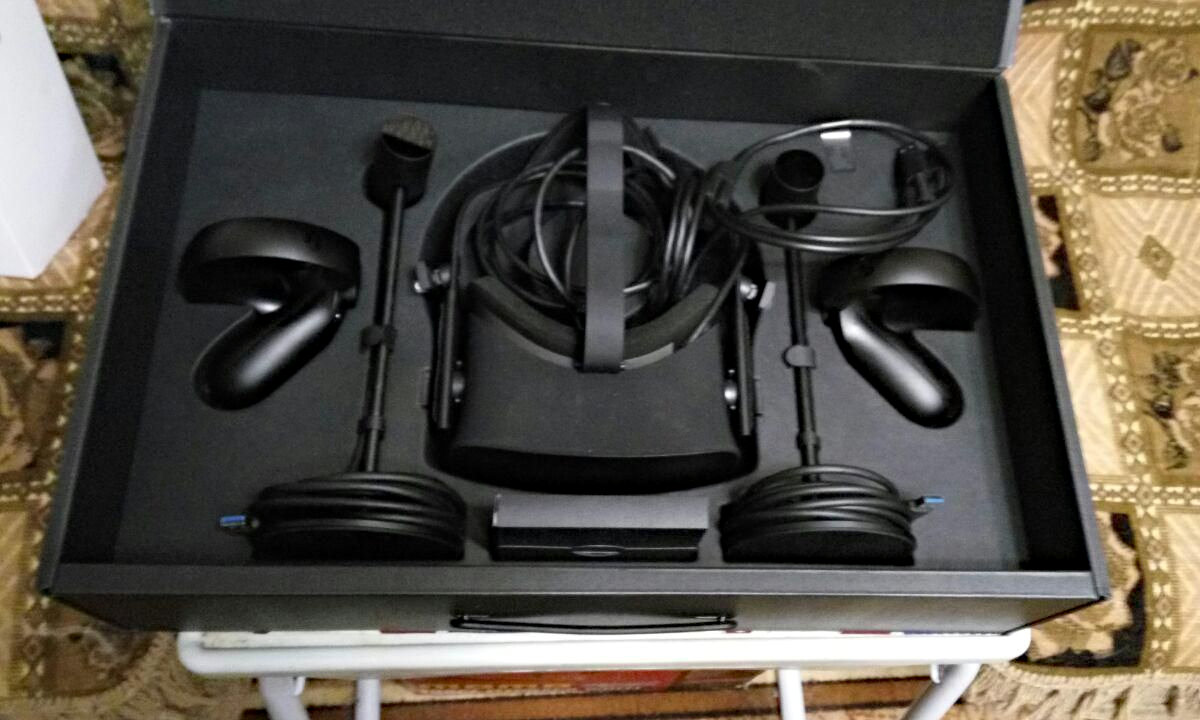
Oculus Rift S is currently the most up-to-date wired Oculus headset. Sales began in May 2019, and the official price is $400 (dropping to $350 on Black Friday). Oculus doesn’t call it a new generation; it’s essentially an upgraded version of the original Rift discussed above.
How is the S model better than the CV1? First, the display resolution has been increased to 2560×1440 across both eyes, with an 80 Hz refresh rate. Second, the headstrap has been redesigned. Third—and most importantly—external sensors are no longer needed, since the headset uses five onboard cameras for inside‑out tracking.
Besides that, the bundle includes two Oculus Touch controllers, which differ from the old Rift’s Touch controllers in that the tracking rings now face upward rather than downward so the headset’s cameras can see them. The Rift’s headphones have been replaced with built-in speakers. That’s more of a drawback than a benefit, but the designers were clearly trying to hit the $400 price point. For what it’s worth, this model is made by Lenovo, as the badge on the side confirms.
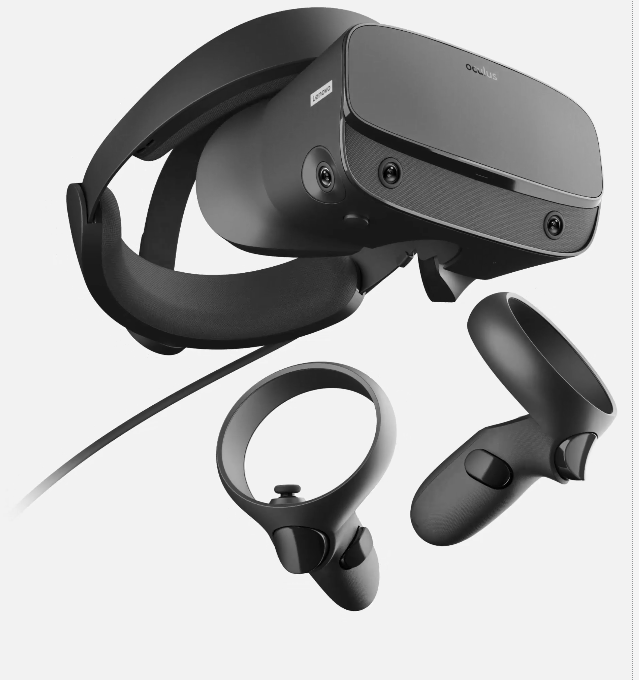
Despite the higher display resolution, the PC system requirements remain the same as for the CV1, thanks to the reduced refresh rate. The only real change is the connection: you now need just one USB 3.0 port and one DisplayPort 1.2 or Mini DisplayPort (an adapter is included).
Here’s a list of the main drawbacks of the Oculus Rift S.
- No physical IPD adjustment. If your interpupillary distance is far from average, you might have issues—try the headset at a VR arcade or store before buying. The developers say it’s comfortable for 58–71 mm (with 64 mm being ideal).
- Very picky about USB ports. It often won’t connect or set up properly, or it may glitch during use if the ports aren’t up to par. That said, Oculus software is improving quickly—new drivers and updates roll out almost weekly—so this should get better over time. Compared to the CV1, it’s still a fairly new product.
- Hand tracking behind your back is unstable, as with WMR headsets, because the cameras can’t see the controllers in that position.
- You’ll need good lighting. In dim light or at dusk, the headset’s tracking can start to act up.
In my view, the Oculus Rift S is currently the best PC headset in terms of price (400 USD), quality, and features.
By the way, rumor has it that Oculus won’t be releasing a new wired headset anytime soon.
HTC Vive, Vive Pro, and Vive Cosmos
I wouldn’t recommend buying the original Vive today. The display is only 1080×1200 per eye (worse than the Oculus Rift CV1), the wand-style controllers aren’t great, and the headset itself is heavy and uncomfortable. You could forgive all that if not for one thing: it’s absurdly overpriced. And that’s true not just of the first-gen headset, but of the entire lineup.
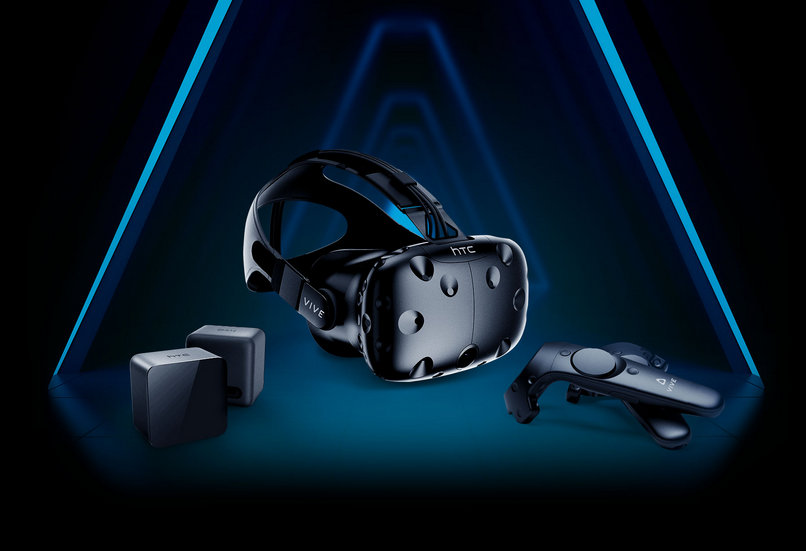
The bundle includes the headset itself, two base stations, and two hand-tracking controllers.
Yes, it uses its own laser-based tracking system that’s supposedly better than the Oculus Rift’s cameras, at least over larger spaces—hence why VR arcades often pick the Vive. But does that really matter to an end user playing in a 2-by-2 meter room? In that scenario, the Oculus Rift S’s built-in cameras are more than adequate for tracking.
The situation is better with the Vive Pro: it has a 90 Hz refresh rate and a 2880×1600 combined resolution (one of the best on the market). It also comes with integrated headphones.
Vive’s PC requirements are a bit less demanding than those for the Oculus headsets.
HTC Vive
- Graphics: GeForce GTX 1060, Radeon R9 290 or better
- Processor: Intel Core i5-4590 / AMD FX-8350 or better
- Memory: 4 GB or more
- Video output: HDMI 1.4, DisplayPort 1.2
- USB: three USB 3.0 ports + one USB 2.0 port
- OS: Windows 7 SP1, Windows 8.1 or later, Windows 10
For the Pro model, a GTX 1070–class GPU and a USB 3.0 port are recommended.
www
- – PC compatibility checker that tells you whether your hardware meets the requirements.
Vive Cosmos is an HTC headset released in late 2019. It relies on inside-out tracking — the headset packs six cameras. That said, their performance still leaves a lot to be desired (looks like the cameras alone aren’t the magic bullet).
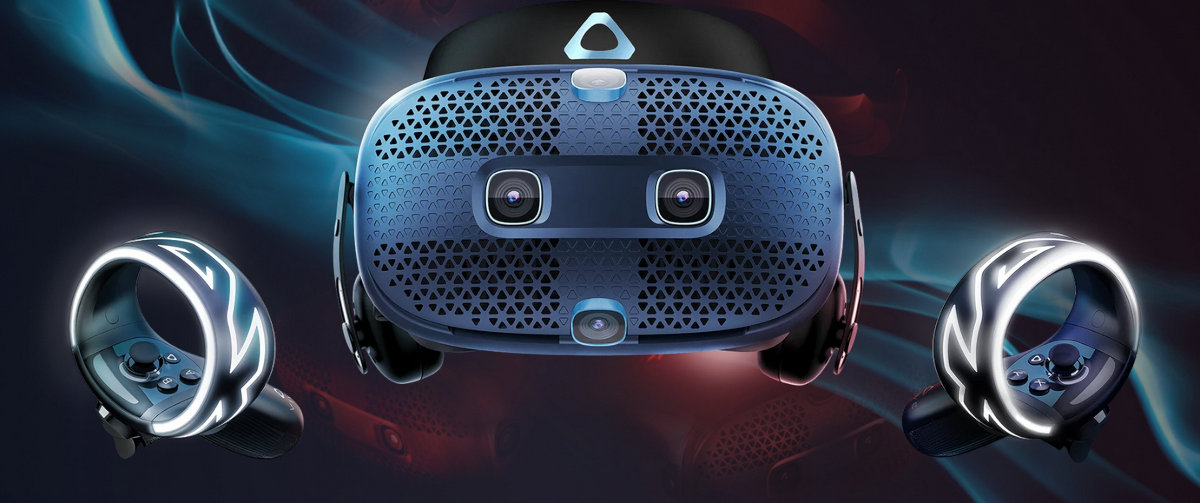
The Cosmos comes with controllers in the box, and this time they actually look pretty nice. The developers say they’ll soon add support not only for inside-out tracking but also for tracking with standard Vive base stations. That’s really only useful if you already own them, though—buying a whole setup just for that doesn’t seem particularly cost-effective or sensible.
The main advantage of the Vive Cosmos is its high‑resolution display (2880×1700 for both eyes) running at 90 Hz. The developers also promise a swappable faceplate and support for add‑on modules. That said, it’s still unclear what those modules will be and who will make them.
All in all, there was plenty of hype around the Cosmos launch, but the product is a mixed bag. Its resolution is slightly higher than the Oculus Rift S, its tracking—at least for now—worse, and the price is more than double.
In late 2019, a report surfaced that HTC’s leadership had grown disillusioned with the VR market—saying they got in too early and were losing money. Not exactly reassuring for prospective buyers thinking about dropping serious cash on these headsets.
Valve Index
Don’t confuse this headset with the Vive models. Valve used to partner with HTC, but now they’ve decided to release their own headset—and they pulled it off.
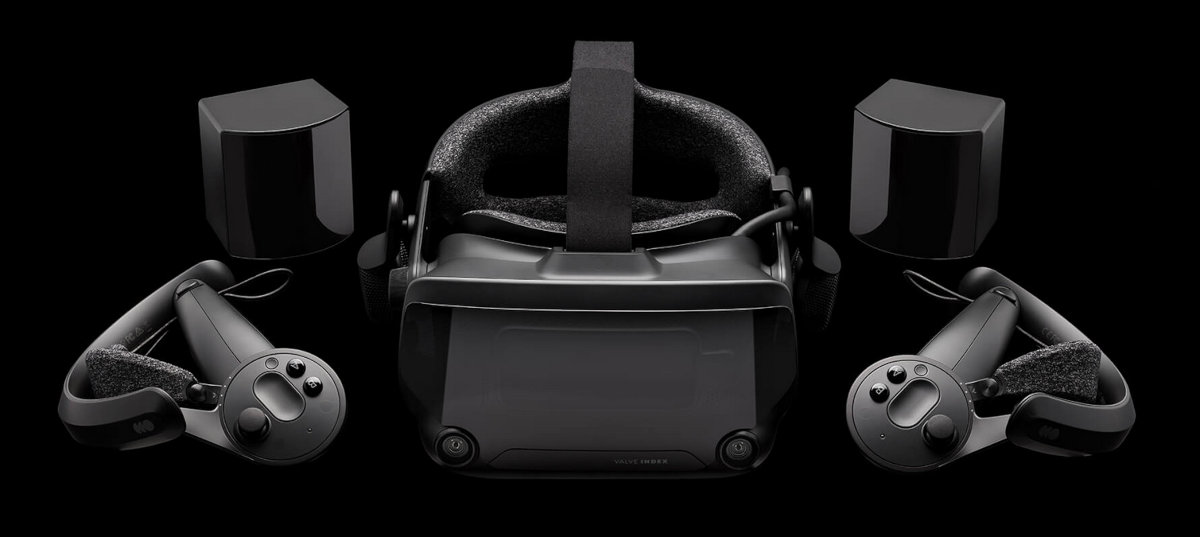
Unfortunately, you still can’t buy it officially—anywhere. The first batch sold out within hours of the June 2019 launch, and the second wave disappeared after the Half-Life: Alyx announcement.
Why all the hype? It’s simple—just look at the Index specs:
- Two displays at 1440 × 1600 per eye (2880 × 1600 total)
- Display refresh rates: 90, 120, 144 Hz (solid!)
- Unique dual-lens optical system that increases the field of view—about 20 degrees wider than the HTC Vive, according to the developers, and users say it’s clearly noticeable
- Excellent headphones (reviews praise the unusually immersive 3D audio)
- Unique controllers with per-finger tracking: https://www.valvesoftware.com/ru/index/controllers
- New SteamVR 2.0 base stations with higher precision and longer range
There’s also a front bay on the headset for add-on modules. For example, there’s already a Kickstarter raising funds to build a ventilation module for the Index. And unlike the Cosmos situation, I can easily believe third-party developers will be interested this time.
As you can see, the specs really are outstanding. And if you’re expecting the catch to be the price, think again: Valve is selling the full kit for just 500, since it’s compatible with controllers and base stations from earlier Vive models. That’s why the next pre-order window won’t open until February 2020.
www
You can test your PC for Valve Index compatibility using the compatibility checker.
Is the Index worth getting? If your PC is up to the task and you’ve got a spare grand, absolutely.
Standalone VR Headsets
What if you don’t have a suitable PC? Does that mean your only option is a smartphone-based setup? Not at all—there are also standalone VR headsets. They’re similar to all-in-one headsets (the kind that use mobile phone–class hardware), but they’re a step up technologically.
These headsets have more specialized hardware and thriving ecosystems—new games and apps are launching now and will keep coming. They also build in inside-out tracking systems, similar to tethered PC headsets. That means they support hand controllers and full positional tracking.
Let’s start with two models you should NOT buy under any circumstances.
Lenovo Mirage Solo
Lenovo’s standalone headset — it has two cameras for inside-out head tracking, similar to WMR headsets, and comes with a single controller that only supports three degrees of freedom (rotation on all axes). It cost $400, and the main issue is that it runs on the now-abandoned Google Daydream platform. It’s no longer sold officially, so there’s little point in considering it.
Vive Focus
The HTC standalone headset features two cameras (like the Mirage) and a 3‑DoF controller. Its main downside is that it targets the Chinese market and only works with the Chinese version of the Vive app store. If you’re still considering it, check out this YouTube review first.
Oculus Go
Oculus Go (nicknamed “Goshka”) is the entry-level model. It lacks cameras for positional tracking but comes with a controller similar to the one bundled with Gear VR, which you can use to control apps. The display resolution is 2560×1440 for both eyes, with a 72 Hz refresh rate.
Here’s what’s inside: a Qualcomm Snapdragon 821 processor with an Adreno 530 GPU, 3 GB of RAM, and Wi‑Fi/Bluetooth controllers. The operating system is Android 7.1.
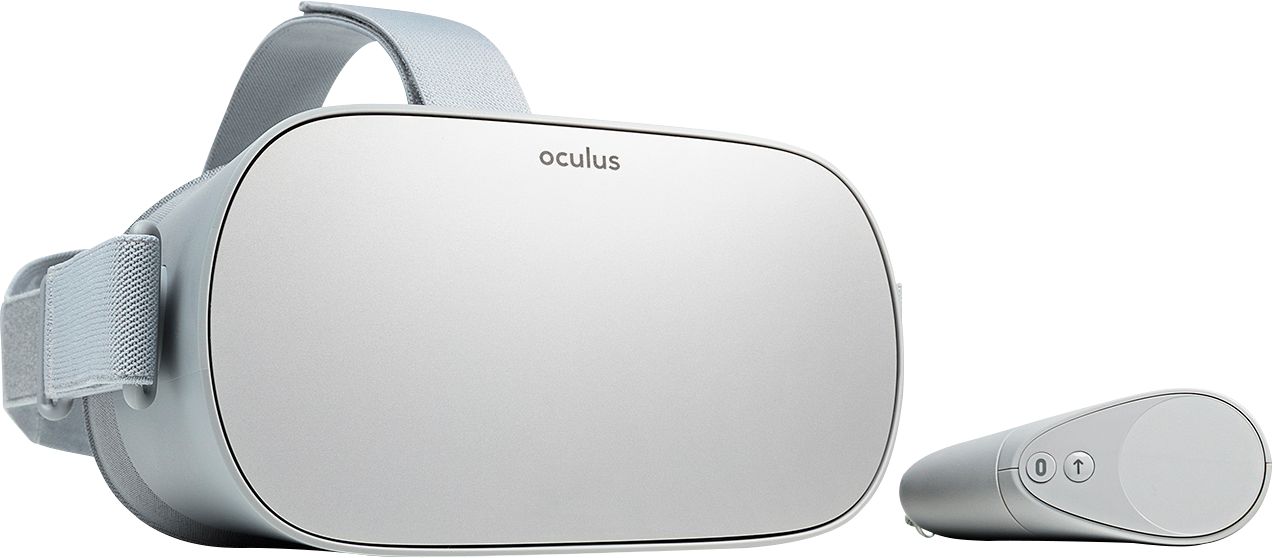
As you can probably guess, you won’t be playing full-fledged VR games on the Go headset. It only has a single hand controller, and even that lacks positional tracking. That said, the Go is great for watching 3D movies, 360-degree panoramas, and simple games like ping-pong.
As with the Chinese headsets, enthusiasts can try setting up a fast Wi‑Fi network, stream PC games, and play them with a gamepad. There’s a good YouTube channel on this topic whose creator does a lot of interesting things with the Oculus Go.
Official pricing: 200 for the 64 GB model. But if you want a device for viewing 3D content and panoramas and your budget isn’t too tight, it’s worth going through the hassle of importing it.
Oculus Quest
“We’re selling Oculus Quest as fast as we can,” announced Mark Zuckerberg in September 2019 (Oculus is a Facebook subsidiary).
And since then, Quest headsets have been selling out the moment they’re restocked. Naturally, retailers and scalpers reselling this excellent headset have driven prices way up. On the official site, it’s priced at 500 for the 128 GB version. However, it’s sold out until March 2020.
So what do you get if you can get your hands on this headset? For starters, full-blown VR with spatial tracking (the headset has four cameras) and two touch controllers, each with six degrees of freedom. In short, it’s on par with the “big” headsets and essentially the same as the Oculus Rift S. The difference is that the Rift needs a PC, while the Quest is completely standalone.
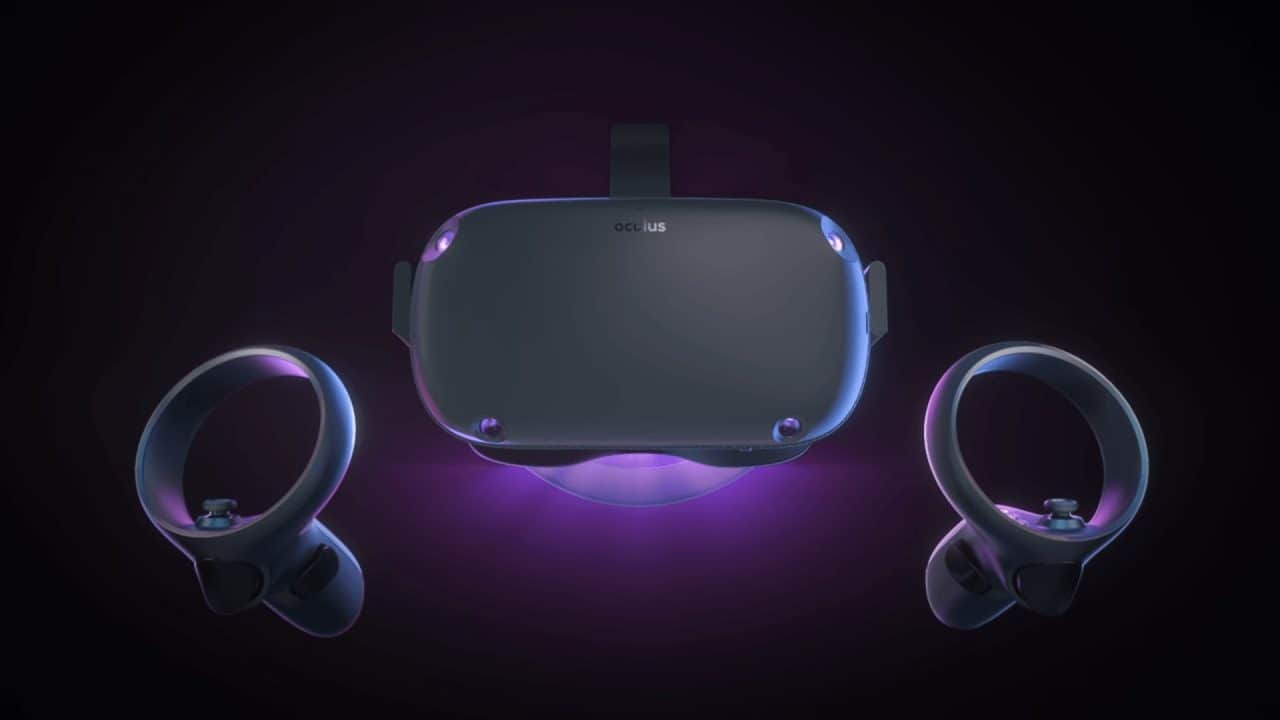
Combined resolution of 3200×1440 (both eyes), 72 Hz refresh rate, powered by a Qualcomm Snapdragon 835 with 4 GB of RAM, plus Bluetooth and Wi‑Fi.
And there’s no setup required. Power on the headset, calibrate, and start playing—both head and hand movements are tracked in VR, all on a mobile, standalone headset. Not bad, right?
“So what’s the catch?” you might ask. It’s simple and pretty obvious: mobile hardware isn’t as powerful as we’d like, and Quest games aren’t exactly going for photorealism. If a game’s been ported from PC, you can bet it’s been pared back for performance. You won’t be playing Skyrim, No Man’s Sky, or Boneworks on Oculus Quest—those titles don’t always run smoothly even on PCs, let alone on mobile hardware.
info
For the Quest, Oculus has its own store, which—unlike Steam—doesn’t offer regional pricing, so everything ends up being much more expensive.
But the Oculus Quest wouldn’t have become a hit without a couple of nice extras. The first is Oculus Link. In November 2019, Oculus announced the ability to connect the Quest to a PC with a cable. In other words, grab a cable that meets the specs, plug one end into the Quest and the other into your PC, and you can play everything as if you had a Rift S or Rift CV1!
First, it’s cost-effective given Steam’s prices; second, the graphics are much better than in games optimized for the Quest. That said, there are caveats: not all GPUs are supported yet, and not every cable will work (see the YouTube review). So there’s a reason Link is still in “beta.”
The second potential Quest feature is hand tracking. It works without additional controllers—thanks solely to the external cameras. In December 2019, this feature also became available in beta.
Right now there aren’t any apps that support this kind of tracking; it only works in the Oculus Home start menu. But sooner or later third-party developers will adopt the feature. At a minimum, you’ll be able to control video playback without controllers or use gestures in social VR apps. And typing without taking off the headset will get a bit easier.
A fair question: why buy an Oculus Rift S when you can just plug an Oculus Quest into a PC via cable and get essentially the same experience—plus standalone capability?
This isn’t so clear-cut. Let’s try to weigh the pros and cons.
- Price: a Rift S for 30k or a Quest plus Link cable for 40k (and a long wait)?
- Displays: they use different panel tech; although the Quest has higher resolution, the screen‑door effect is more noticeable on it.
- Comfort: many prefer the Rift S’s halo headband over the Quest’s strap system.
- The Rift S doesn’t need charging.
- The Rift S’s cable attachment is better designed; on the Quest it’s easy to yank the cable out with a careless movement.
- And of course the Rift S image looks sharper, since the Quest’s signal is first compressed with a clever algorithm and then decompressed. How that works and side‑by‑side results are in this comparison video: https://www.youtube.com/watch?v=zvqEiV7K64M
No question, the big advantage of the Oculus Quest is that it runs standalone, without a PC. You can just toss it in a backpack and head to a friend’s place for a VR party. However, if you already have a powerful PC and plan to play games or do any professional work in VR, I’d still recommend the Oculus Rift S.
If you don’t have a powerful PC—and especially if you’re planning to buy one later (or upgrade your current rig)—then the Quest is the best option you can get right now. But with the current hype, unfortunately, it won’t be cheap or easy.
PS VR
Another interesting option is PlayStation VR. According to Sony, more than five million VR headsets for PlayStation 4 have been sold worldwide. It might even be the most popular VR system right now (we don’t have sales data for the Oculus Quest, and on Steam only about 1.5% of players own a VR headset).
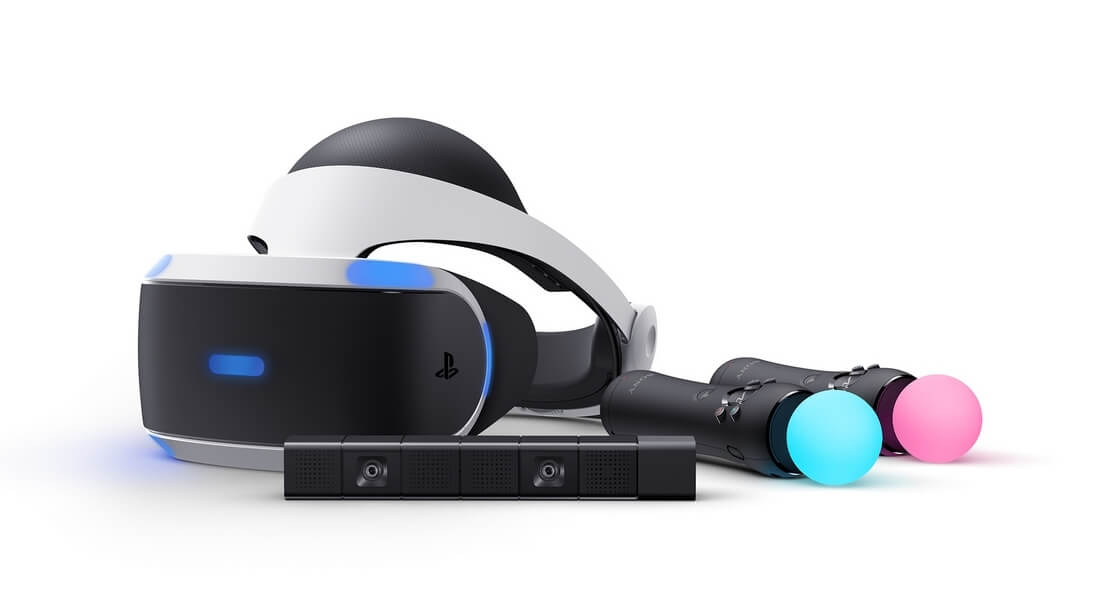
And if you already have a PS4, the choice is pretty obvious: during sales you can pick up a PS VR bundle. It won’t include PS Move controllers, but you can easily find those on eBay and similar sites. However, if you don’t own a PS4 and you’re thinking of buying one along with PS VR solely for virtual reality (not for other games), that’s not the best idea—and here’s why.
- The display is low-res by today’s standards: 1920×1080 total for both eyes (though the refresh rate is 90–120 Hz).
- Positional tracking relies on a single camera and only works across 180 degrees. You can try to jury‑rig up to four cameras to get 360 degrees, but that isn’t an out‑of‑the‑box solution and it’s pretty janky.
- As a result, you can’t do room‑scale; you’ll be playing seated or standing in one spot.
- Instead of modern controllers, you get the old PS Move wands from 2012. They were built to compete with the Wii, not for VR.
- Consequently, there are no thumbsticks. Movement is limited to teleportation or smooth “glide” in a preselected direction, which is awkward compared to standard stick locomotion.
- PS VR also has its own app ecosystem. Not only are games often far pricier than on Steam, many popular VR titles simply aren’t available. There are some exclusives, but I’d still pick Steam.
In classic console fashion, PS VR needs no tinkering: you buy it, plug in the cables, and it just works—no configuration or other hassles.
Quick Tips
I’ve put together the simplest, shortest guidelines for choosing a helmet.
- Not sure VR is your thing? Hit a VR arcade and try a modern headset.
- Have a capable PC and a tight budget? Get a Windows Mixed Reality headset or a used Oculus Rift CV1 or HTC Vive.
- Have a capable PC and a bit more to spend? Get an Oculus Rift S.
- Have a capable PC and budget isn’t a concern? Get a Valve Index or a Vive Pro.
- Have a capable PC, plenty of cash, and want the absolute best? Put a deposit down on a Pimax and wait for shipping.
- No PC, but you’ve got a compatible smartphone and a limited budget? Grab a simple viewer like Google Cardboard.
- No PC, a bigger budget, and you only need movies or panoramas? Get an Oculus Go.
- No PC and enough money? Wait for and order an Oculus Quest.
- No PC but you have a PS4? Get PS VR and don’t overthink it.
VR Games
So, you’ve already bought a headset—now what? Time to fire up some games! Let’s run through a list of the most popular and visually impressive titles available for today’s VR headsets.
I’m focusing specifically on Steam as the most affordable and accessible platform for VR content. SteamVR-based games can be played on all PC headsets mentioned in this article.
I want to point out that it’s very hard to grasp what VR gaming actually feels like in advance, and YouTube videos won’t get you there. I’ve already written about the nuances of movement. In shooters, for example, the direction you’re looking and where you’re aiming aren’t the same thing. How much details like that matter for immersion is hard to convey in words — it’s much better to experience it yourself.
Popular games ported to VR
You’ve probably heard of these titles if you’re into gaming. All of them have been fully ported to VR.
Skyrim VR
The Dragonborn is now in virtual reality! With full motion controller support, you can swing at foes and cast spells with your own hands.
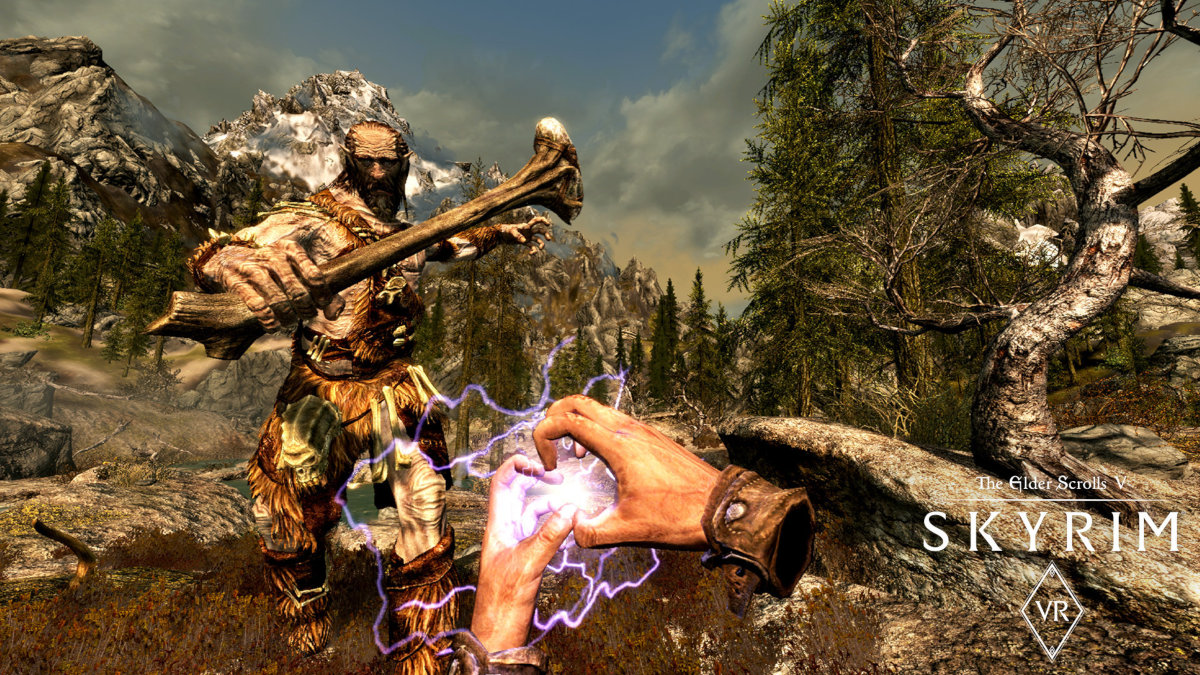
Fallout 4 VR
The fourth entry in this post-apocalyptic RPG isn’t regarded as the best, but Bethesda did at least faithfully port it to VR.
No Man’s Sky
A great space sim that got full, official VR support in the summer of 2019.
Serious Sam
The entire series of a popular arcade shooter. Sure, it’s been around for a while, but VR is a great excuse to replay it.
DOOM VFR
Not the full 2016 Doom, but a game inspired by it and built specifically for VR. Besides that, there are fan-made mods for Doom 3 that also add full VR and controller support to this old game.

Elite Dangerous
A popular multiplayer space combat simulator, specifically designed with VR in mind (requires a gamepad or a keyboard and mouse).
Subnautica
A popular underwater survival game with native VR support. A gamepad is required.
Assetto Corsa, DiRT Rally (1 and 2), and Project CARS (1 and 2)
All of these racing games support VR, and you can play with a steering wheel, a gamepad, or a keyboard. But gripping a real wheel is way more fun!
Euro Truck Simulator 2
A popular long‑haul truck driving life simulator. There’s also an American version, and both support VR. Steam doesn’t list it, but VR support definitely exists; it’s just in “beta” mode.
Hellblade: Senua’s Sacrifice VR Edition
This award-winning game works brilliantly in VR, despite its third-person perspective.
Minecraft
No comment necessary. The link is for the Oculus version, but there are others as well.
War Thunder
The multiplayer air-combat game also supports a VR mode — still experimental.
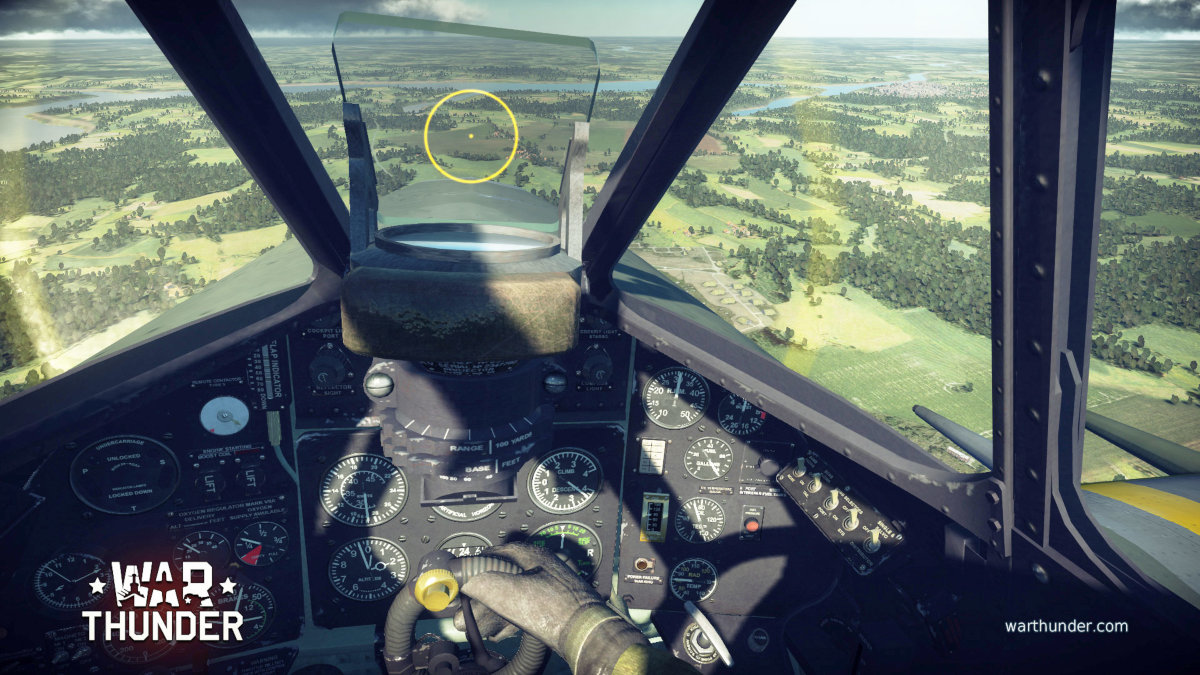
Alien Isolation
Playing hide-and-seek with the Alien in VR is even more nerve‑racking than usual! There’s a fan-made mod for this game that enables simultaneous support for both gamepads and motion controllers.
Borderlands 2 VR
The famous looter-shooter has made its way to VR as well.
This list mostly includes games where the VR mode was added by the developers themselves. But there’s also third-party software that adds stereo 3D support to many games. For example, check out vorpX (see the supported games on the developer’s site). With it, some games in a headset feel like you’re sitting in front of a giant 3D screen, while others can deliver full immersion in the game world.
Enthusiasts have even managed to get The Witcher 3 running in VR with a first-person view (not so much for actual gameplay as for strolling around, looking around, and enjoying the scenery), let alone various Half-Life installments or, say, GTA.
VR‑Exclusive Games
Beat Saber
Arguably the most popular VR game today. You slice blocks with two lightsabers to the beat. Despite the simple premise, many people buy a headset just for this game.
Space Pirate Trainer
An excellent arcade shooter where you blast enemy spaceships flying toward you. It’s reminiscent of the classic Galaga on the NES—old-timers will remember sinking hours into it on those Dendy NES clones.
Boneworks
One of 2019’s standout titles: a shooter in the vein of Half-Life and Portal, with an excellent physics engine and the freedom to destroy just about anything. Rumor has it Valve delayed the Half-Life: Alyx reveal after being impressed by Boneworks.
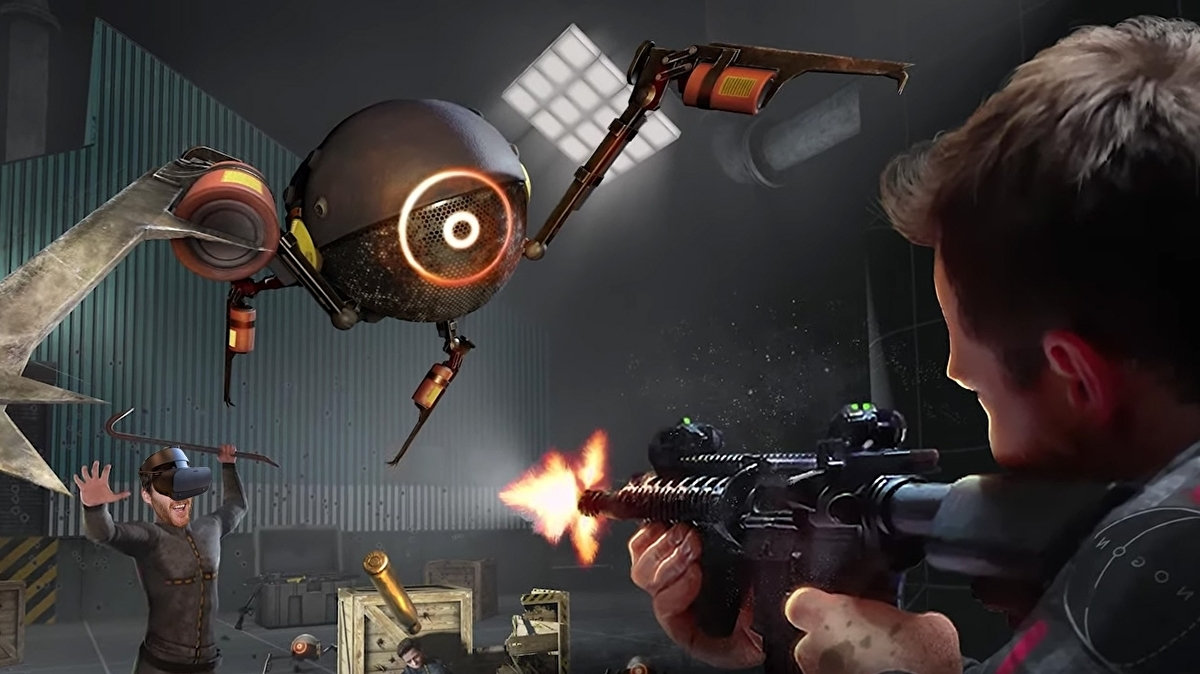
Superhot VR
A shooter that lets you channel your inner Neo, deftly dodging incoming bullets: time only advances when you move.
Arizona Sunshine
One of the first standout zombie shooters made for VR. There are tons of zombie shooters now, but Arizona Sunshine is still a favorite for many to this day.
Racket Fury: Table Tennis VR
An excellent table tennis simulator. For billiards, air hockey, and other games, check out the Sports Bar VR app.
Pavlov VR
A popular online VR shooter (think Counter-Strike). Other games in the same vein include Zero Caliber VR and Onward. In short, there’s no shortage of VR shooters.
Ready Player One: OASIS beta
A game—more precisely, a collection of games—based on the film and novel Ready Player One.
PokerStars VR
The official PokerStars poker app. Real-money play isn’t supported, but there’s plenty of fun and lots of poker!
GORN
A popular VR gladiator simulator.
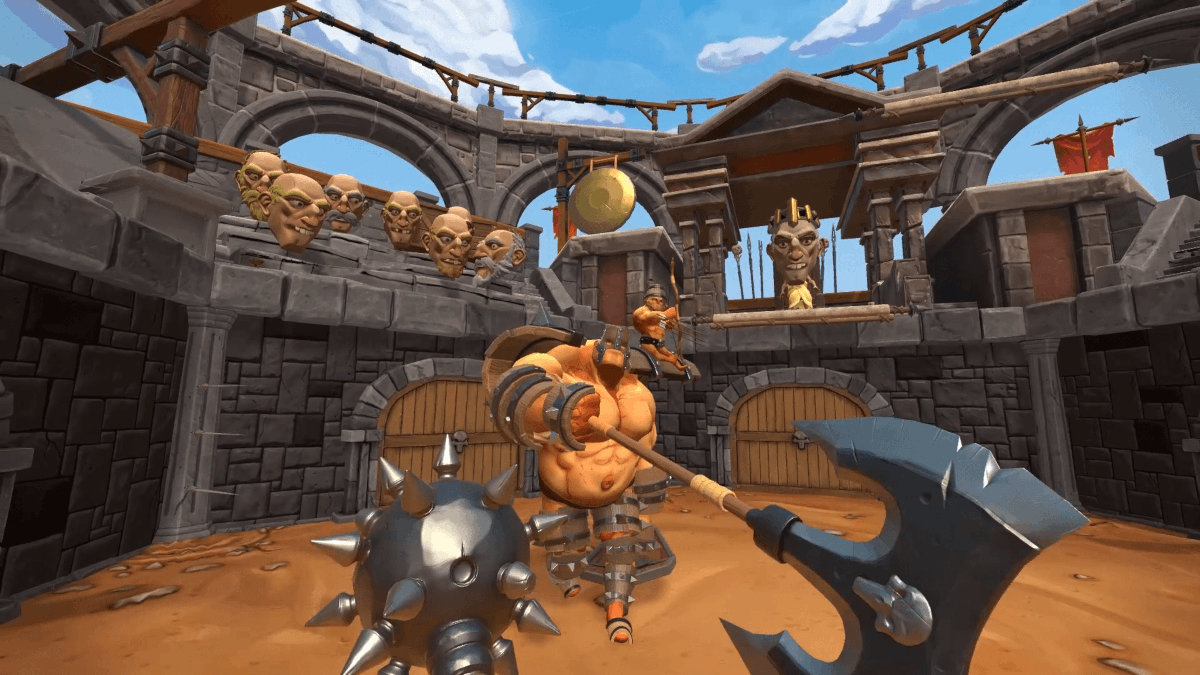
The Wizards
A game with a unique spellcasting mechanic: spells are driven by gestures. Want to hurl a fireball? Snap your hand forward. Need a shield? Pull your hand back toward yourself. There’s a tutorial, and it’s easier to pick up than this description might make it sound.
Oculus Exclusives
Robo Recall
A great game about destroying robots.
Lone Echo
A space odyssey for Oculus. Many consider it the best VR game.

Echo VR
A free zero‑gravity playground. It offers two modes: team deathmatch and Discoball (a frisbee‑style sport). Really well executed.
Defector
A spy action game for Oculus.
Asgard’s Wrath
An epic VR adventure inspired by Norse mythology.

Stormland
An android’s adventures in an open-world, post-apocalyptic setting.
Vader Immortal
A Star Wars–inspired adventure with lightsaber duels.
www
If you want, you can run these games on other headsets. For that, there’s the Revive project.
These lists are, of course, subjective—I included the stuff I personally liked. Check the Top Sellers section and you’ll find plenty more worth your time. New VR titles hit Steam almost every day.
What can you do in VR besides gaming?
For now, VR headsets are used mostly for games and “experiences,” but many developers are already looking ahead to a future where virtual reality is applied much more broadly. And they’re not just thinking about it—they’re already bringing those ideas to life.
Social media in VR
VRChat
This chat service, already popular outside of VR, supports all modern VR headsets.

AltspaceVR
A VR social network that was on the brink of closure when Microsoft acquired it. You’ll find everything from games to simple “campfire hangouts.”
Rec Room
A popular social platform geared mostly toward gaming. It even features a Battle Royale mode!
Sansar
A VR project from the creators of the popular virtual world Second Life. The idea is to deliver a VR counterpart to Second Life.
Bigscreen Beta
It’s both an app for streaming your PC’s screen to a headset and a social platform for co-watching videos. You can get together with friends in a virtual room to watch YouTube or a movie. In late 2019, the developers announced a full-fledged virtual theater—complete with a schedule, tickets, and other attendees. And you can make your own popcorn and save a bunch!
Additionally, Facebook announced the Horizon project, which is slated to launch for users as early as 2020.
Panoramic tours
Google Earth
Google Earth panoramas (link to Steam, though the app is available on other platforms) are especially fun to explore in VR. In this app you can jump to any spot on Earth where Google’s Street View cars have been. The imagery wasn’t captured in stereoscopic 3D, unfortunately, but it’s still cool to view regular panoramic photos in full immersion and look around just by moving your head. On top of that, many VR players support 180–360-degree formats, so you can watch panoramic videos from YouTube… and more 😉
Watching 3D Content
Naturally, if you have a VR headset, you can use it as a full-fledged home 3D theater. That’s a whole topic in itself—I’ve put together a comprehensive FAQ on it.
VR for Professionals
These days, many designers, artists, and 3D creators are looking at VR not as entertainment, but as a production environment. The first truly usable 3D editors are starting to appear there. Here are a few examples.
Oculus Medium
A ZBrush‑style editor where, in VR, you manipulate the model with your own hands (via motion controllers). It’s like sculpting in clay or plasticine, but with all the advantages of digital creation. You get layers, materials, and everything else you might need. Today, Medium is considered the VR editor closest to professional tools—no wonder Adobe acquired the project not long ago.
info
If you plan to use VR for professional work, you’ll need a powerful PC—just like with gaming. The key requirements are a modern graphics card (GTX 1060 or AMD RX 490 and above) and plenty of RAM—16 GB recommended, 32 GB even better.
Gravity Sketch
Another VR editor whose workflow is driven by vector-graphics concepts. You sketch, add depth, color it, and so on. You can see how it works in this video.
Tilt Brush
A no-frills editor that becomes highly effective in the right hands, with simple, intuitive tools at your disposal. You can check out sample works in the official gallery.

Blocks by Google
A simpler app that lets you manipulate geometric primitives.
Kingspray Graffiti VR
For anyone who enjoys creating graffiti in virtual reality.
Enthusiasts are finding other uses for VR as well—for example, recording covers of popular songs using VR tools. But it’s worth remembering that VR still has a long way to go before it finds its way into creative studios, let alone offices. I covered this in more detail on my blog.
Common drawbacks of VR headsets
If after all this you’re ready to run out and buy a headset, I should also remind you of the drawbacks.
- Some people don’t tolerate VR well: nausea, dizziness, and other “special effects.” Beginners often struggle to adapt, but it usually gets better with time.
- On every headset available today, you can still see the pixel grid—the screen‑door effect.
- The same goes for the narrow field of view, which creates a “scuba mask” effect.
- Headsets are usually heavy and, despite ergonomic tweaks, aren’t very comfortable for long sessions.
- PC‑tethered headsets have cables that get in the way—especially if you try to walk around.
- VR game graphics will always lag behind traditional games because VR demands extremely high resolution and ultra‑low head‑tracking latency. This is especially true for standalone headsets.
- Reminder: a non‑standalone (tethered) headset is useless without a powerful PC.
- Prices are slowly coming down but are still steep. For the best models you either pay a premium, or import and wait. Sometimes you wait, then order, then wait again.
- Extended use of a headset may be harmful to your health.
The Bottom Line
Most of today’s VR issues will be resolved one way or another in the near future—or are already being addressed. Headsets are getting cheaper, and displays are improving. Fully wireless devices like Oculus Quest are appearing, eliminating the need for a PC. Graphics keep advancing, and the games themselves are getting more engaging. One way or another, VR is headed for the mainstream—just not as fast as many expected.
To the skeptics, let me remind you: three decades ago, no one expected computers, the internet, and smartphones to take off the way they did. Now we can’t imagine life without them. One day, VR will be just as commonplace, and everyone will have their own VR device—maybe even several, just like with smartphones today.
